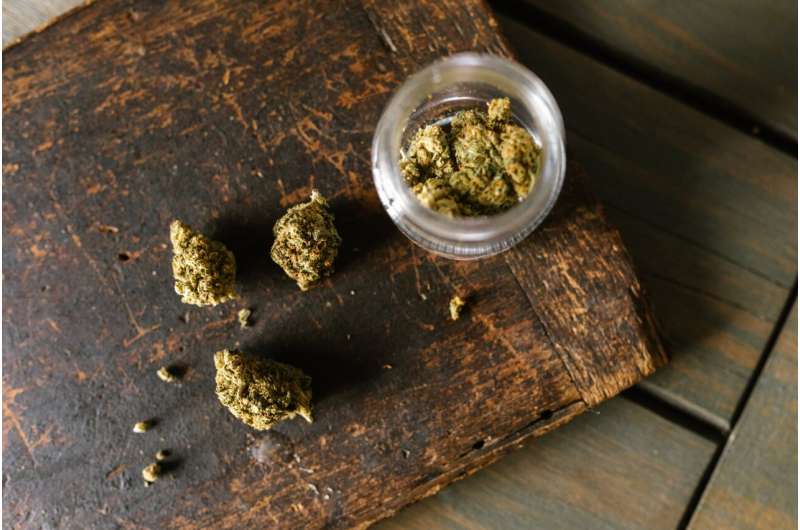This article has been reviewed according to Science X's editorial process and policies. Editors have highlighted the following attributes while ensuring the content's credibility:
fact-checked
trusted source
proofread
Study finds high school students no more likely to use marijuana after legalization

High schoolers who perceive that their parents, siblings or friends use marijuana were much more likely to use marijuana themselves—but no more so after cannabis was legalized in the commonwealth in 2016, according to University of Massachusetts Amherst research.
"It's not news that youth are influenced by peers," says Faith English, a Ph.D. candidate in the School of Public Health and Health Sciences and lead author of a paper published in a special issue of Clinical Therapeutics that discusses critical opportunities of cannabis legalization. "But our paper was really the first to look at these three particular roles within a person's social network and then look at changes from pre- to post-legalization. It was really quite novel."
While perceived marijuana use by family and friends was known to be a risk factor for adolescent marijuana use, English and senior author and injury prevention researcher Jennifer Whitehill, associate professor of health policy and management, wanted to examine whether this association changed in the context of legalization. No association was found between the legalization of cannabis for adult recreational use and adolescent use, though further research is warranted, English says.
Youth who perceive that their parents, siblings or friends use marijuana are identified by the research as a subpopulation who may be at an increased risk for cannabis use and for whom additional prevention and intervention strategies should be implemented, English says.
The researchers analyzed two waves of data collected by a local substance use coalition that surveyed students at two eastern Massachusetts high schools. When comparing data from 2016, before legalization, and 2018, after legalization but before retail cannabis stores had opened, the researchers found no statistically significant differences in the prevalence of past 30-day marijuana use. Among the 2016 participants, 19% of females and 27% of males reported past 30-day marijuana use. In the 2018 survey, 20% of females and 28% of males reported past 30-day marijuana use.
After legalization, there was an increase in the proportion of adolescents who reported a perception that their parents used marijuana (from 18% before legalization to 24% after legalization), even before retail stores opened.
Perceived marijuana use by a best friend—compared to perceived use by a parent or sibling—had the largest association with marijuana use by adolescents, the research found.
In addition to her work on marijuana use among youth, English is interested in how legalization may influence criminal justice system contact among youth. Her doctoral dissertation is examining trends in cannabis-related school-based discipline in Massachusetts and using qualitative interviews with persons ages 14–20 to understand their perspectives on and experiences with school discipline.
"We know there's a link between experiencing school-based discipline and pathways to the criminal justice system. I am curious about the relationship between cannabis liberalization policies and school-based discipline.
"Policy is very nuanced, and this is a public health policy that is impacting youth in real time," English says. "We don't really know what all the impacts are, both positive and negative—when we think about the war on drugs and racialized mass incarceration, to what extent does legalizing cannabis ameliorate or perpetuate the harm done by the war on drugs?"
The UMass Amherst research can help inform policy and public health guidelines not just in Massachusetts but in other states rolling out cannabis laws. Recreational marijuana is now fully legal in 24 states plus the District of Columbia. The legal age to buy and possess marijuana for recreational use in those states is 21 years old.
"One of the million-dollar questions as cannabis policies are being implemented across the country is whether or not youth use increases after legalization," English says.
"There's a lot of concern that underage folks will start using cannabis with greater frequency. The brain isn't done developing until about age 26, so the messaging really is to delay use until after that age."
More information: Faith English et al, Risk Factors for Adolescent Cannabis Use in a State With Legal Recreational Cannabis: The Role of Parents, Siblings, and Friends, Clinical Therapeutics (2023). DOI: 10.1016/j.clinthera.2023.04.002





















